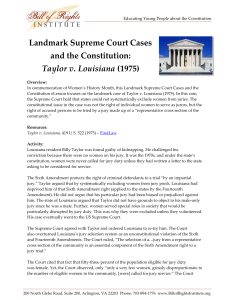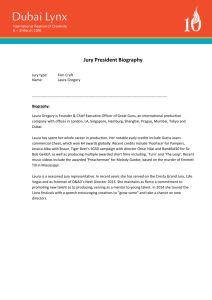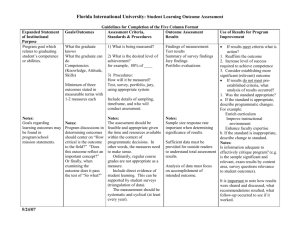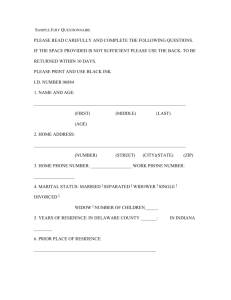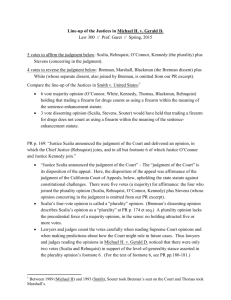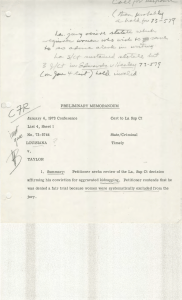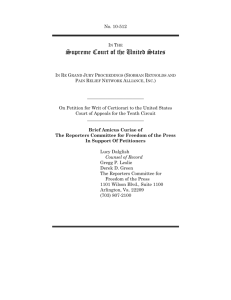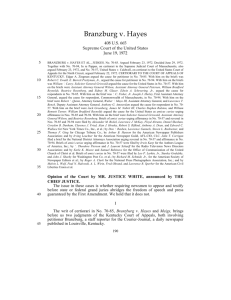Taylor v. Louisiana: Supreme Court Case & Constitution
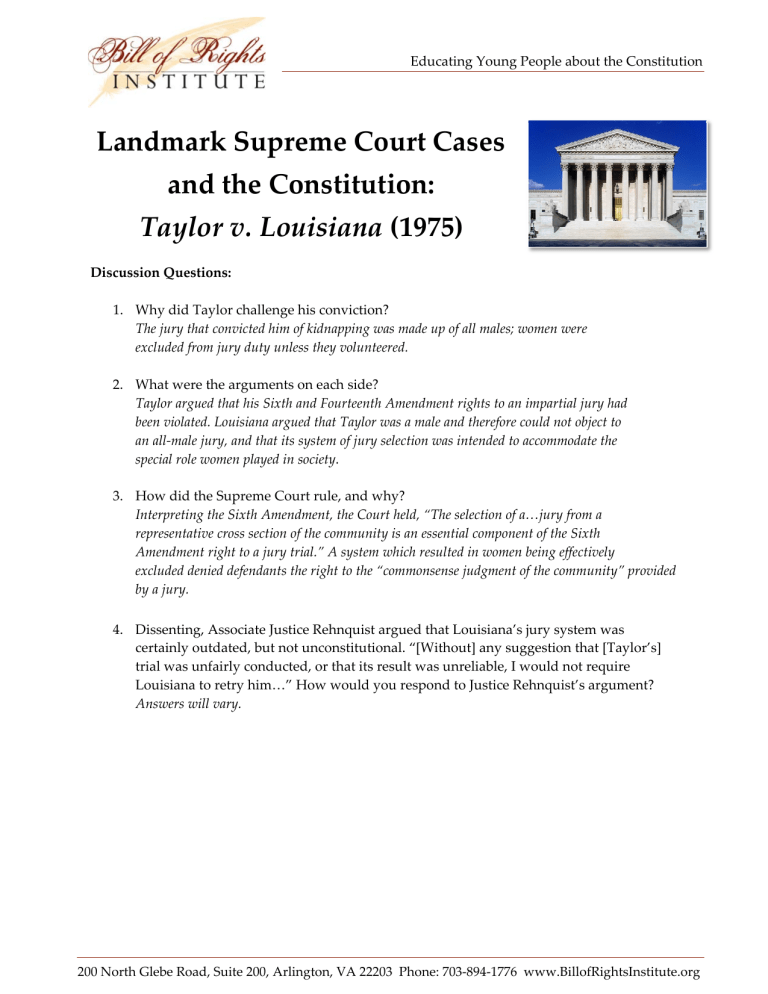
Educating Young People about the Constitution
Landmark
Supreme
Court
Cases
and
the
Constitution:
Taylor
v.
Louisiana
(1975)
Discussion Questions:
1.
Why did Taylor challenge his conviction?
The jury that convicted him of kidnapping was made up of all males; women were excluded from jury duty unless they volunteered.
2.
What were the arguments on each side?
Taylor argued that his Sixth and Fourteenth Amendment rights to an impartial jury had been violated.
Louisiana argued that Taylor was a male and therefore could not object to an all ‐ male jury, and that its system of jury selection was intended to accommodate the special role women played in society .
3.
How did the Supreme Court rule, and why?
Interpreting the Sixth Amendment, the Court held, “The selection of a…jury from a
representative cross section of the community is an essential component of the Sixth
Amendment right to a jury trial.” A system which resulted in women being effectively excluded denied defendants the right to the “commonsense judgment of the community” provided by a jury.
4.
Dissenting, Associate Justice Rehnquist argued that Louisiana’s jury system was certainly outdated, but not unconstitutional.
“[Without] any suggestion that [Taylor’s] trial was unfairly conducted, or that its result was unreliable, I would not require
Louisiana to retry him…” How would you respond to Justice Rehnquist’s argument?
Answers will vary.
200 North Glebe Road, Suite 200, Arlington, VA 22203 Phone: 703 ‐ 894 ‐ 1776 www.BillofRightsInstitute.org



